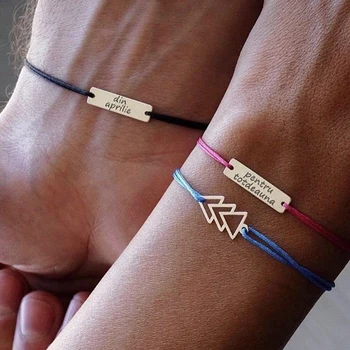Friendship bracelet
How to rebuild a broken friendship?
When a friendship breaks up, it can feel like it’s impossible to pick up the pieces and put them back together. Some broken friendships are destined to stay that way. However, when you have a special intimate friendship that has brought meaning to your life, renewal is important. Restored relationships give us perspective on our experiences, and deepen our lives. Not all friendship cracks are fatal.
If you have a long-lost friendship that you’d like to rekindle, there’s a good chance you can reestablish a meaningful connection. Today, we present a five-step plan to help you determine whether or not a friendship needs to be saved, and if so, how you can do it.
Table des matières
STEP ONE: Measure the benefits
First and foremost, you must determine whether a broken friendship is worth repairing. Unhealthy relationships are not worth it if they require you to compromise your principles or damage your self-esteem. A good friend will understand and respect your beliefs. Realizing that a friendship is no longer working can be a positive step. If the cost is too high, make a clean break. If the friendship has meaningful qualities and is worth the cost of repair, you are ready for the next four steps.

STEP TWO: Establish a constructive contact
Start by calling or writing a letter to convey a main message: “Our friendship is precious to me, and I miss seeing you. Is there a way to resolve what is keeping us apart?” This simple step helps to open the doors to reconciliation. At this point, there is no need to air your grievances. You are simply setting the stage to see if your friend is willing to seek a solution as well.
STEP THREE: Forgive as best you can
It is difficult to let go when you have been wronged. It is natural to feel the need to get even and “restore the balance.” The problem with revenge is that once you feel that the compensation is satisfactory, there is a good chance that your enemy will punish you in turn. It’s a vicious cycle.
How can you stop it? By forgiving.
Forgiveness ends everything.
You need to put your pride aside and try to see the situation from all angles. The problems that plague a friendship are rarely 100% one person’s fault. If you keep this in mind, you’ll be well on your way to forgiving, rather than balancing the books.
STEP FOUR: Diagnose the problem
It is essential to determine what went wrong if you want to avoid repeating the problem. Naturally, we tend to avoid diagnosing the problem. Why? We don’t want to face the fact that people are part good and part bad.
Seeing things in black and white seems easier and more convenient. But most things in life, including friendships, are in shades of gray. Don’t act like there are no problems, get to the bottom of things together and move on. If a friendship cannot survive such a conversation, it may be a sign that it needs to end.
STEP FIVE: Restore Respect
The final step in repairing a broken friendship is to restore respect. If you have been hurt, start by pointing out the most admirable qualities of your friend that inspire you to be a better person. The goal is to restore respect by pointing out the qualities you value most in him.
Then, you must take responsibility for your part in the relationship, by sending a sincere apology for not being the kind of friend you could have been. Take responsibility and ask for forgiveness. If you do this, mutual respect is almost certain.
If you feel a pang of regret or remorse when you think of a former friend and do nothing, you will never know what could have been. Some relationships will recover without a hitch, others may never regain all the joy they once had. However, satisfaction will only be known if you try!







 (5 / 5)
(5 / 5)